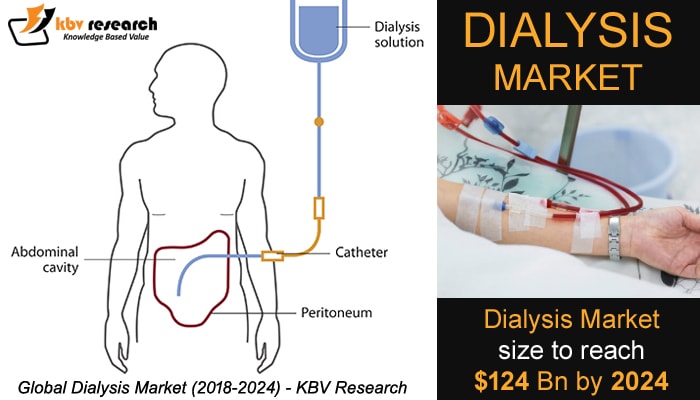
When kidneys fail to function due to disease or injury, dialysis help in keeping the body running as normally as possible. In absence of dialysis, salts and other waste products tend to mount up within the blood, poison the body, and sooner or later, damage other organs. People with damaged kidneys usually face difficulty in eradicating waste and unwanted water from the blood. This is the artificial approach for facilitating this process. Dialysis helps in removing waste products like urea and creatinine from the blood which is caused due to inappropriate functioning of kidney. The procedure is useful for people suffering with chronic renal failures.
Hemodialysis is the most popular and common type of dialysis. This process uses an artificial kidney to remove waste and extra fluid from the blood. The blood is extracted from the body and filtered through the artificial kidney. The filtered blood is later returned to the body with a dialysis machine. To generate proper blood flow to the artificial kidney, surgeons perform surgery to create an entrance point, called vascular access, inside the blood vessels. [embed]https://youtu.be/YN35WaRk6XI[/embed]
The employment of short-term daily hemodialysis has increased remarkably over the last few years. Short daily hemodialysis helps in improving blood pressure due to reduced extracellular fluid volume. Short daily hemodialysis provides a substantial increase in small molecule clearance as measured by urea kinetics. Treatment of renal disease patients with short daily hemodialysis is associated with improvement in blood pressure. According to studies, the survival rate among patients treated by short daily hemodialysis is significantly better than the treatment performed by conventional hemodialysis.
Nocturnal dialysis is a slow hemodialysis treatment that is conducted at night while the patient is asleep. This longer treatment usually goes on for up to eight hours, three times or more a week. Nocturnal dialysis can be done at home as well as at dialysis center that has a nocturnal dialysis program.
Peritoneal dialysis is a surgical process which implants a peritoneal dialysis (PD) catheter inside the abdomen. The catheter filters the blood through peritoneum, which is a membrane in the abdomen. In the course of treatment, a distinct fluid called dialysate is flown into the peritoneum. Dialysate absorbs waste. The procedures involved in this approach consumes a few hours and requires repetition of four to six times per day. Nevertheless, the exchange of fluids can be implemented while the patient is sleeping or awake. Continuous Ambulatory Peritoneal Dialysis (CAPD) is a sub-category of peritoneal dialysis. In continuous ambulatory peritoneal dialysis, the abdomen is filled and drained several times every day. This approach does not require a machine and should be performed while the patient is awake.
Vascular access is developing rapidly, and options available to surgeons or radiologists are expanding more and more. Accordingly, it is vital that the ones involved in conducting vascular access are aware and well-equipped with up to date options. Dialysis care is thus improving, and patients are now living longer. It is essential that alongside this journey they have access to all opportunities for the journey of renal replacement.
With the growing need for dialysis, the requirement for a cost-effective system is also surging at a parallel pace. Once market ready, innovations could revolutionize the access to treatment by transforming dialysis practices in remote settings and developing countries.
According to a report by KBV Research, one of the leading market research domains, the Global Dialysis Market is anticipated to reach $124 billion by 2024, escalating at a growth of 5.7% CAGR over the estimated period.
Full Report: https://www.kbvresearch.com/dialysis-market/
Click Here For Free Insights: https://www.kbvresearch.com/news/dialysis-market-size/